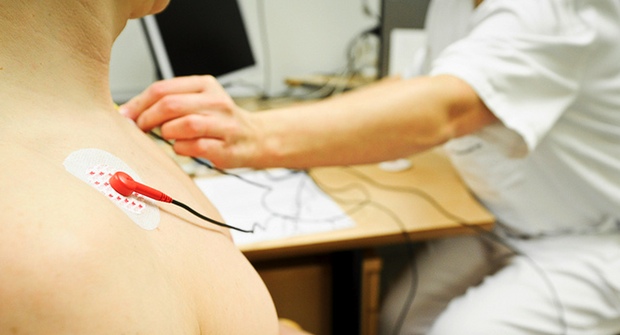In a move critics are calling health-care rationing, nine of the nation’s leading medical organizations have identified 45 tests and procedures they deem unnecessary and, in some cases, harmful to patients.
The Choosing Wisely campaign, an initiative of the American Board of Internal Medicine, asked specialty societies representing 347,000 physicians to develop a list of “five things physicians and patients should question,” in an effort to reduce wasted resources and make wiser decisions. Some estimates cited by the group say unnecessary treatment accounts for one-third of medical spending in the United States.
While the announcement has already caused an uproar among patients and critics alike, Dr. Gary Little, medical director of George Washington University Hospital, says physicians have been questioning these procedures and tests for the past 20 to 30 years. “The days of just ordering tests willy-nilly are gone,” says Little, who was not involved with the recommendations. “It’s just not something any physician who’s trying to practice good medicine in today’s age is going to do.”
However, Little says since all diseases have an overlap in symptoms, oftentimes ordering a test can be beneficial in diagnosing a patient, even if the results are negative. “A lot of this is based on an analysis of ‘the outcome justifies the reason,'” he explains. “The fact that the test was negative doesn’t mean it was unnecessary. It helps you exclude something so you can move onto a different diagnosis or treatment plan. “
He cites the recommendation that physicians consider ultrasounds versus CT scans for children who are suspected to have appendicitis. Little says information picked up from CT scans is more reliable and straightforward than that from ultrasounds. Therefore, they may pick up other potential diseases and show that it may not actually be appendicitis.
Other tests that made the list include performing pap smears on women younger than 21, which the American Academy of Family Physicians says can result in unnecessary anxiety and cost, since “most observed abnormalities in adolescents regress spontaneously.”
Another procedure considered questionable is routinely prescribing antibiotics for acute mild-to-moderate sinusitis. A study published this year in the Journal of the American Medical Association found it was better to let a sinus infection run its course than to visit a doctor and take prescribed medication. The American Academy of Family Physicians stated that sinusitis accounts for 16 million office visits and $5.8 billion in annual health-care costs.
Other common tests physicians say should be reduced include stress cardiac imaging on patients who show no symptoms, and MRIs or CT scans for patients with nonspecific back pain or headaches.
The American Society of Clinical Oncology went so far as to recommend against chemotherapy or cancer-directed therapy to treat solid-tumor patients who did not benefit from previous treatment, or were already poor in health. They also said to avoid imaging for patients with early stages of breast or prostate cancer who are at low risk for metastasis, since “unnecessary imaging can lead to harm through unnecessary invasive procedures, over-treatment, unnecessary radiation exposure, and misdiagnosis.”
However, Little says while it’s good that the specialty groups’ recommendations are encouraging physicians to question the appropriate treatments, procedures, and diagnoses, it’s important to include patients in the dialogue. “These groups are more oversight or advocacy groups, but they’re not directly at the patients’ bedside,” he says. “I think we need everybody to be at the table, including these groups and patient advocate groups who also have a stake in quality care. Being paternalistic and saying, ‘I’m going to do it my way’ rather than engaging the patient in decision-making, well, that’s not a healthy patient relationship at all.”
In the fall, expect eight more medical societies to release lists, including the American Academy of Hospice and Palliative Medicine, American College of Rheumatology, and the American Society for Clinical Pathology, among others.
To view all nine lists, click here.



















